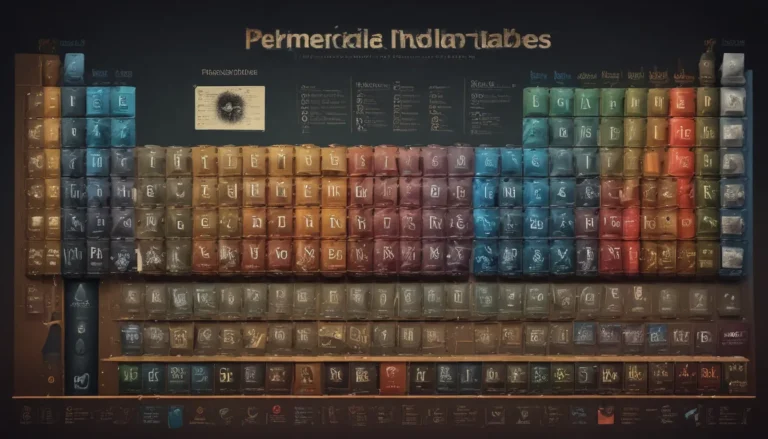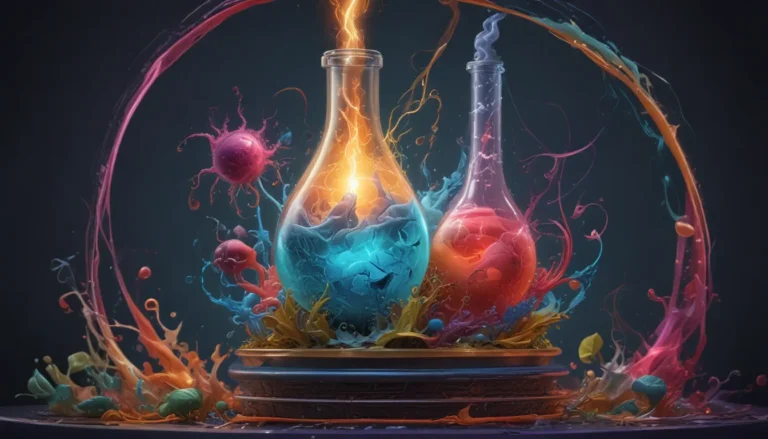A Note About Images: The images used in our articles are for illustration purposes only and may not exactly match the content. They are meant to engage readers, but the text should be relied upon for accurate information.
Welcome to the enchanting world of chemistry, where the Law of Conservation of Mass reigns supreme! This fundamental principle, first introduced by Antoine Lavoisier in the 18th century, continues to captivate scientists and learners alike with its profound implications for understanding matter and chemical reactions. Join us as we delve into 13 intriguing facts about the Law of Conservation of Mass that will enhance your appreciation of this cornerstone concept in chemistry.
Unveiling the Magic: Key Takeaways
- The Law of Conservation of Mass dictates that the total mass of a closed system remains constant, with no atoms created or destroyed during chemical reactions. It’s like a mystical balancing act of matter!
- Understanding this law empowers scientists to anticipate and manage mass changes in various fields, from environmental sciences to material research, akin to having the ability to manipulate matter and unveil scientific mysteries.
A Foundation of Chemistry: The Law of Conservation of Mass
This law, pioneered by Antoine Lavoisier in the late 18th century, revolutionized the realm of chemistry by providing a fundamental principle for interpreting chemical reactions and transformations.
Enduring Balance: Mass Cannot be Created or Destroyed
According to this law, the total mass of the reactants in a chemical reaction must equal the total mass of the products, signifying that no atoms are lost or gained, but merely rearranged to form new substances.
Universal Applicability: Embracing All Types of Reactions
Whether it’s a combustion reaction, a precipitation reaction, or a complex organic synthesis, the principle of mass conservation holds true for every chemical process, enriching our understanding of the chemical world.
The Power of Atoms: Foundation of the Law
This law is rooted in the conservation of atoms, which are indivisible and indestructible entities. Thus, chemical reactions entail the rearrangement of existing atoms into different configurations.
Beyond Mass: Harmony with Energy Changes
While energy transformations occur in chemical reactions, they do not impact the total mass of the system. Energy and mass are distinct entities governed by separate conservation laws, harmonizing in the intricate dance of chemical processes.
Bridging Science: Connection to Einstein’s Theory of Relativity
Einstein’s iconic equation, E=mc², illustrates the equivalence of energy and mass, yet only in scenarios involving significant energy alterations like in nuclear reactions, without contradicting the Law of Conservation of Mass in everyday chemical phenomena.
Widening Perspectives: Extending to Open Systems
In open systems where mass flows into and out of the system, the law accounts for mass flow, ensuring conservation on a broader scale and showcasing the adaptability of this fundamental principle.
Atomic Precision: Upholding at the Smallest Level
Despite atoms being divisible into subatomic particles, the principle of mass conservation still holds, with the total mass of protons, neutrons, and electrons remaining constant within a closed system.
Practical Applications: Fueling Scientific Advancements
The Law of Conservation of Mass underpins essential applications in various scientific domains, from environmental chemistry to pharmaceuticals and material sciences, enhancing our ability to comprehend chemical transformations and balance equations with precision.
Unity of Laws: Harmony with the Conservation of Energy
Aligned with the Law of Conservation of Energy, these principles interweave through Einstein’s theory of relativity, spotlighting the interconnectedness between matter and energy and laying the groundwork for the laws of physics and chemistry.
Empirical Origins: Founded upon Experimental Evidence
Lavoisier’s meticulous experiments on mass changes during chemical reactions provided empirical support for the Law of Conservation of Mass, propelling the advancement of modern chemistry and reinforcing the significance of the principle.
Global Impact: Driving Predictions in Environmental Processes
Comprehending this law enables scientists to forecast and address mass changes in critical environmental processes such as the carbon cycle, pollutant degradation, and natural resource formation, emphasizing its global relevance.
Timeless Relevance: A Guiding Principle in Modern Chemistry
Even today, the Law of Conservation of Mass remains a cornerstone in chemistry, guiding stoichiometric calculations, fueling scientific inquiry, and shaping our understanding of the physical universe through its enduring validity and applicability.
Conclusion: A Thriving Principle of Chemistry
The Law of Conservation of Mass serves as a beacon in the vast expanse of chemistry, anchoring our understanding of matter, reactions, and the universe. By upholding this fundamental principle, scientists navigate through the intricate world of chemical transformations with precision and clarity, uncovering new discoveries and innovations.
FAQs
- What is the Law of Conservation of Mass?
-
The Law states that mass remains constant in a chemical reaction, with the total mass of reactants equaling the total mass of products.
-
Who discovered the Law of Conservation of Mass?
-
Antoine Lavoisier, a French chemist in the late 18th century, is credited with pioneering this fundamental law.
-
How does the Law relate to balancing chemical equations?
-
Balancing equations ensures the conservation of mass, with the number of atoms of each element maintained equally on both sides of the equation.
-
Does the Law apply to all types of reactions?
-
Yes, the Law of Conservation of Mass is a universal principle that governs all types of reactions across various chemical processes.
-
Can mass be converted into energy?
-
According to E=mc², mass can be converted into energy and vice versa, illustrating the interchangeable nature of mass and energy.
-
Is the Law still valid today?
- Absolutely! The Law of Conservation of Mass stands firm as a fundamental law of nature, shaping modern chemistry and scientific exploration.
Dive deeper into the enchanting world of chemistry and expand your understanding with our captivating articles on related topics. Explore the fascinating relationship between mass and energy in the Law of Conservation of Mass-Energy Equivalence and uncover the historical roots of modern chemistry with incredible facts about Lavoisier’s Law. Let curiosity be your guiding light as you journey through the wondrous realms of science and discovery.
As passionate advocates for factual accuracy and engaging content, we strive to deliver trustworthy insights and information to our readers. Each contribution on our platform is a testament to our commitment to quality and authenticity, ensuring that every fact shared is not only captivating but also credible. Join us on this journey of exploration and learning, where knowledge thrives and curiosity flourishes in the vibrant tapestry of science.






